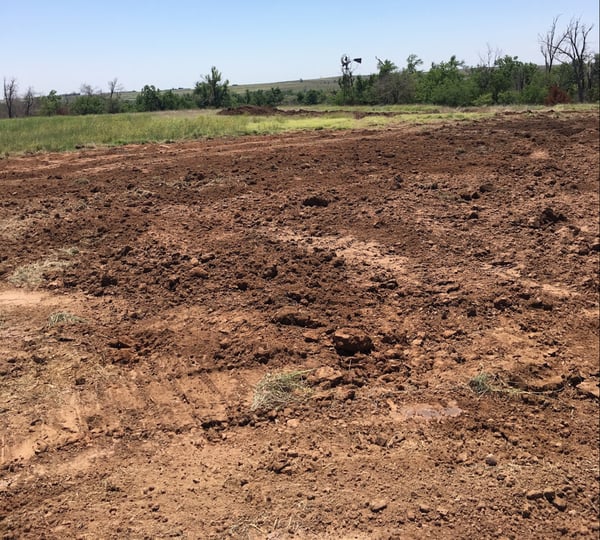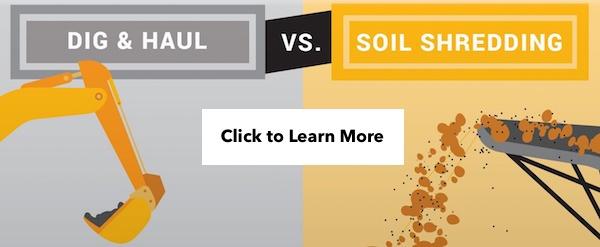Soil contamination is more common than you might think. It happens in agricultural areas, industrial sites, and even on residential lots. Removing the contaminants from the soil renders the site useable for other purposes.
When soil is contaminated, one option to correct the problem is in-situ soil remediation. In-situ simply means "in place." Actions are taken, on-site, to remedy the contamination and to render it harmless.
What Are Some In-Situ Remediation Options?
Here are four of the more common in-situ soil remediation options available:
Chemical oxidation
This process involves mixing certain chemical oxidants with contaminated soil. The chemical oxidants begin to react with the contaminants in the soil, creating less harmful compounds in the process.
Fenton's reagent, a blend of iron agents (iron filings) and hydrogen peroxide are a common combination used in this kind of chemical oxidation process. The iron agents are injected into the soil, then the hydrogen peroxide is introduced into the same soil. The hydrogen peroxide is extremely effective in breaking down petroleum contaminants. However, its effects are amped up when mixed with the iron in Fenton's reagent.
Augmented microbial enhancement
This option introduces certain microbial organisms into the contaminated soil. These microbes have the ability to break down certain compounds or chemicals by natural digestive processes. This renders the contaminant neutral or less harmful.
One example of this process is the use of microbes to break down cadmium contaminants. Cadmium enters the soil through fertilizers, sewage sludge, and aerial disposition. To remove cadmium contamination, microbes are injected into the soil. In time, the microbes break the Cadmium down into less harmful components.
Aeration
This option helps to remediate soil in circumstances where hydrocarbon contamination is present. Hydrocarbons are most often associated with petroleum product contamination like gas or oil. When the contaminants are buried deep, they remain intact. However, by getting oxygen to interact with the hydrocarbons, it can spur and speed up natural biodegradation of the contaminants.
This method can happen through a few methods. One is ground aeration where the soil is dug up and exposed to the open air. Another is to insert oxygen deep into the soil with bioventing.
Soil Blending
This option can lower the concentration of contaminants in the soil. In some circumstances, the problem is the amount of contaminants in the ground is outside acceptable limits. By introducing uncontaminated soil and blending it with the contaminated ground, the concentration of contaminants is lowered to acceptable levels.
This is commonly used in areas where agricultural pesticides are the main contaminant. Testing shows how far down the contamination needs to be remediated and what the contamination concentrations are. This indicates how much uncontaminated soil must be introduced and how far down it must be blended.
Who Can Clean Up A Contaminated Site?
If you have a contaminated site, call the experts at Talon/LPE. Our experts can help you figure out a plan and get the remediation started.
Here are four of the more common in-situ soil remediation options available:
Chemical oxidation
This process involves mixing certain chemical oxidants with contaminated soil. The chemical oxidants begin to react with the contaminants in the soil, creating less harmful compounds in the process.
Fenton's reagent, a blend of iron agents (iron filings) and hydrogen peroxide are a common combination used in this kind of chemical oxidation process. The iron agents are injected into the soil, then the hydrogen peroxide is introduced into the same soil. The hydrogen peroxide is extremely effective in breaking down petroleum contaminants. However, its effects are amped up when mixed with the iron in Fenton's reagent.
Augmented microbial enhancement
This option introduces certain microbial organisms into the contaminated soil. These microbes have the ability to break down certain compounds or chemicals by natural digestive processes. This renders the contaminant neutral or less harmful.
One example of this process is the use of microbes to break down cadmium contaminants. Cadmium enters the soil through fertilizers, sewage sludge, and aerial disposition. To remove cadmium contamination, microbes are injected into the soil. In time, the microbes break the Cadmium down into less harmful components.
Aeration
This option helps to remediate soil in circumstances where hydrocarbon contamination is present. Hydrocarbons are most often associated with petroleum product contamination like gas or oil. When the contaminants are buried deep, they remain intact. However, by getting oxygen to interact with the hydrocarbons, it can spur and speed up natural biodegradation of the contaminants.
This method can happen through a few methods. One is ground aeration where the soil is dug up and exposed to the open air. Another is to insert oxygen deep into the soil with bioventing.
Soil Blending
This option can lower the concentration of contaminants in the soil. In some circumstances, the problem is the amount of contaminants in the ground is outside acceptable limits. By introducing uncontaminated soil and blending it with the contaminated ground, the concentration of contaminants is lowered to acceptable levels.
This is commonly used in areas where agricultural pesticides are the main contaminant. Testing shows how far down the contamination needs to be remediated and what the contamination concentrations are. This indicates how much uncontaminated soil must be introduced and how far down it must be blended.
Who Can Clean Up A Contaminated Site?
If you have a contaminated site, call the experts at Talon/LPE. Our experts can help you figure out a plan and get the remediation started.



